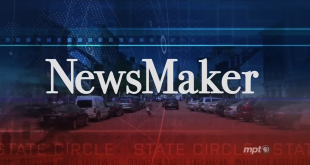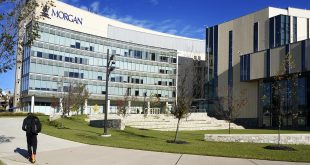Research seeks answers in many critical areas such as climate change
Morgan State University has secured a $28.5-million share of a $95.8-million, five-year grant from NASA Goddard Space Flight Center, to do research in support of NASA’s strategic Earth and space science objectives. Morgan will play a major part in the research as part of a four-member team selected for the Goddard Earth Sciences Technology and Research (GESTAR) Studies and Investigations. The grant is the largest in Morgan’s history.
“This grant represents a significant recognition of the quality of Morgan’s academic programs and research in STEM (science, technology, engineering and mathematics),” says Dallas R. Evans, chairman of Morgan’s Board of Regents. “I am proud that NASA has acknowledged the talent of the students on our campus by selecting Morgan as a partner in GESTAR.”
Led by the Universities Space Research Association (USRA), Morgan professors and graduate students and the other members of the GESTAR team will take on some of the most important and high-profile challenges in science today, in areas including atmospheric chemistry, oceanography, polar climate change, and the carbon cycle and its effect on ecosystems, among others.
Morgan President David Wilson, who articulated a vision for the University during his inaugural address that includes a doubling of grants and research over the next ten years, sees this grant as a major step toward that goal. “Morgan is committed to its graduates being strong, not just in the STEM fields but also in critical thinking and global awareness and that is exactly what this grant will do,” said Dr. Wilson. “I am convinced that through this partnership our students will be provided with even richer experiences and many more opportunities, for example, to do internships at NASA. On the other hand, NASA benefits from having access to a more diverse body of talent from which to recruit in the future.”
USRA selected Morgan as a member of its research team because of MSU’s commitment to science-, technology-, engineering- and mathematics- (STEM-) related disciplines, including doctoral programs in bioenvironmental sciences and investment in state-of-the-art research facilities, such as the Richard N. Dixon Center for Science Research and the new Center for the Built Environment and Infrastructure Studies, currently under construction on campus.
“I am elated to hear that Morgan was selected for this partnership with USRA and NASA,” said Maryland State Senator Joan Carter Conway (43rd, Baltimore City). “This really affirms the University’s stature in the higher education community as one of the nation’s leaders in producing African American scientists and engineers.”
Besides USRA and Morgan, the other members of the team are The Johns Hopkins University, and the I.M. Systems Group. Among the objectives of the GESTAR team is to “increase the involvement of minority and women scientists in earth science research.”
“As a science educator, I am excited to see such a significant partnership and major investment in an HBCU with a strong base in science and engineering, especially given that these institutions contribute so much to diversifying the pool of science and engineering professionals,” says Shirley M. Malcom, Ph.D., member of Morgan’s Board of Regents and head of the Directorate for Education and Human Resources Programs for the American Association for the Advancement of Science. “As a regent, I am thrilled to see this kind of game-changing investment in Morgan State!”
 Morgan State University Newsroom Morgan State University
Morgan State University Newsroom Morgan State University




